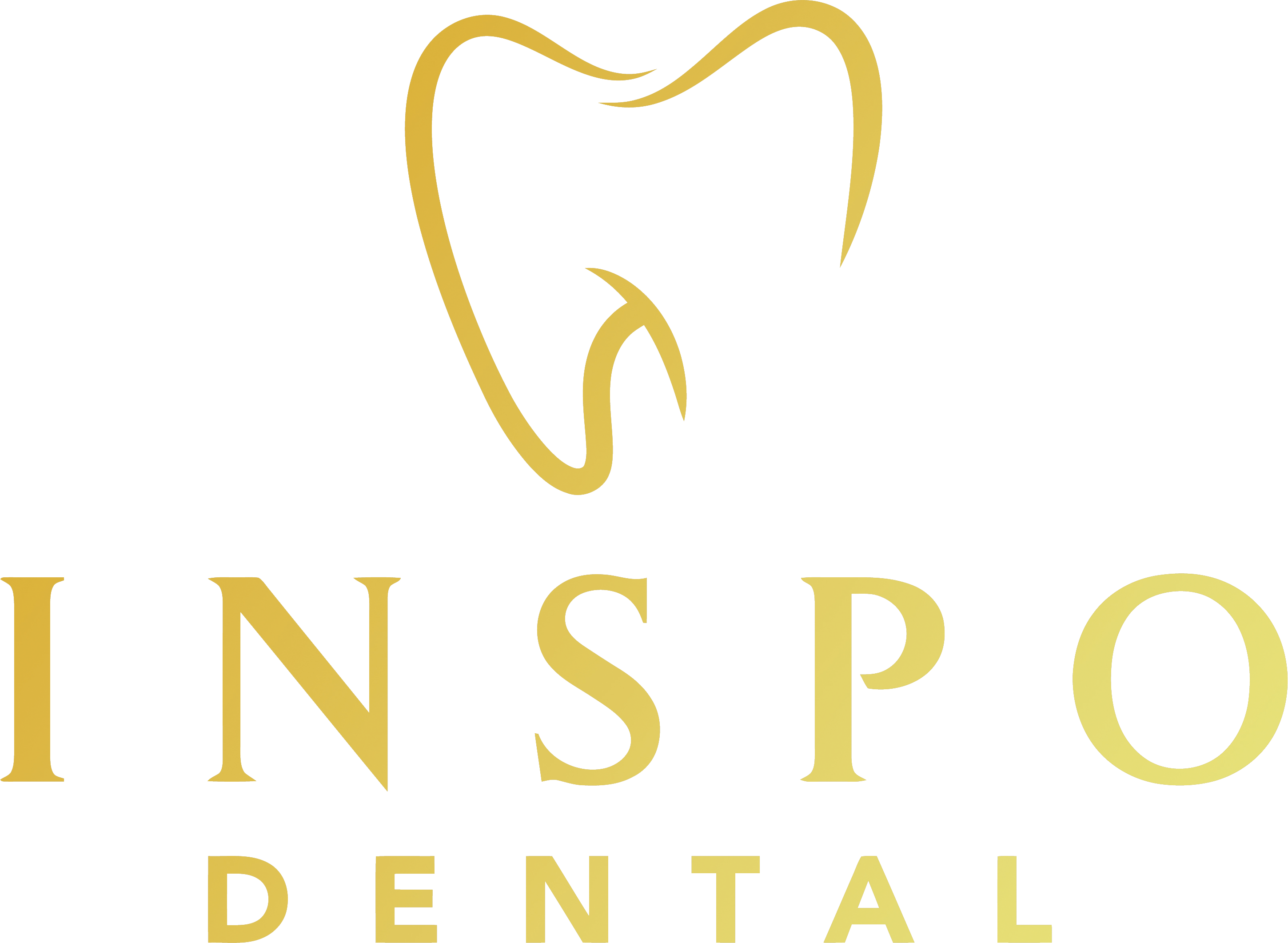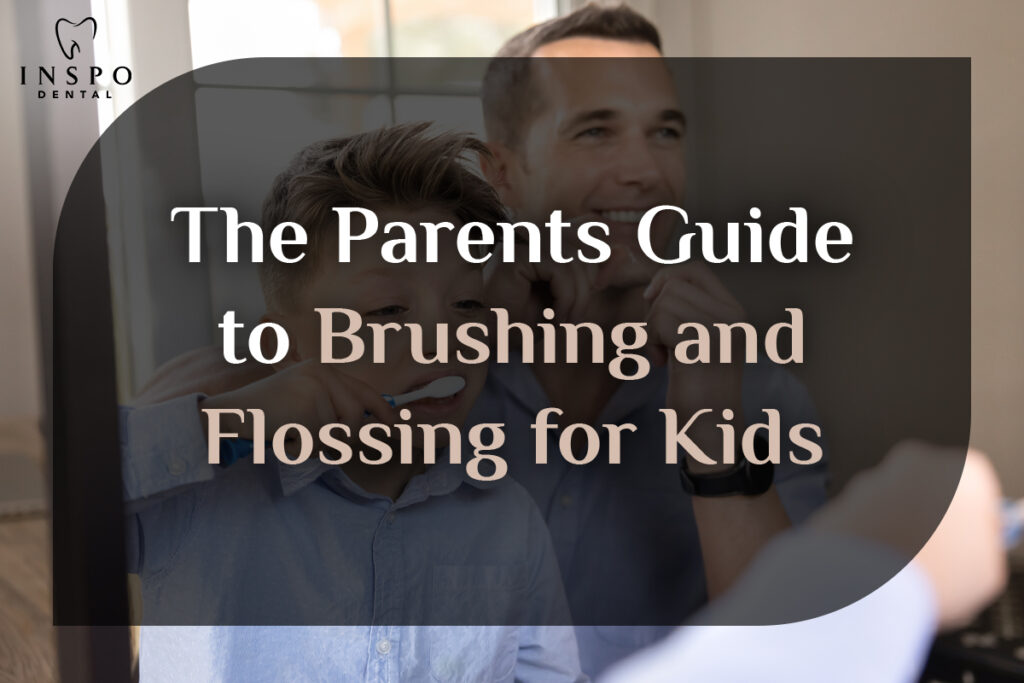🦷 Introduction: Why Oral Hygiene Matters for Kids
Every parent wants to see their child’s smile healthy, bright, and full of confidence. But behind that beautiful smile is a foundation of good oral hygiene that starts right from childhood. Teaching your children the importance of brushing and flossing early not only protects their baby teeth but also instills lifelong habits for dental health.
Poor oral hygiene in kids can lead to cavities, gum disease, bad breath, and even problems with eating and speaking. According to the CDC, tooth decay is one of the most common chronic diseases in children aged 6 to 19. But the good news? Proper brushing and flossing techniques, combined with regular dental visits, can prevent most of these issues.
In this comprehensive guide, we’ll walk you through everything parents need to know about brushing and flossing for kids — from when to start to how to make it fun and engaging.
💡 Understanding the Basics of Brushing & Flossing
📌 What Is Brushing?
Brushing helps remove food particles and plaque — a sticky film of bacteria — from the teeth and gums. It plays a crucial role in preventing cavities and gum disease.
📌 What Is Flossing?
Flossing cleans the areas between the teeth where a toothbrush can’t reach. This helps remove debris and plaque from between teeth and under the gumline, reducing the risk of cavities and gum inflammation.
✅ Why Both Brushing and Flossing Are Important:
- ✅ Prevents cavities and tooth decay
- ✅ Protects gums from gingivitis and infections
- ✅ Keeps breath fresh
- ✅ Maintains healthy teeth alignment and spacing
- ✅ Builds a strong oral care foundation for adulthood
🪥 The Right Time to Start Brushing & Flossing for Kids
🍼 When Should Brushing Begin?
- ✅ Start cleaning your baby’s mouth even before teeth come in using a soft, damp cloth or gauze.
- ✅ Begin brushing with a soft-bristled, infant-sized toothbrush as soon as the first tooth appears (usually around 6 months).
🧵 When Should Flossing Start?
- ✅ Flossing should begin as soon as two teeth touch each other, typically between the ages of 2 to 3 years.
- ✅ Even if your child doesn’t have all their teeth yet, flossing between touching teeth helps prevent decay in those hard-to-reach areas.
✅ Choosing the Best Toothbrush and Toothpaste for Children
🪥 Toothbrush Selection Tips:
- ✅ Use a soft-bristled toothbrush designed for kids.
- ✅ Choose a small brush head to fit comfortably in their mouth.
- ✅ Look for fun designs or favorite cartoon characters to make brushing exciting.
- ✅ Replace the toothbrush every 3 months or sooner if the bristles are frayed.
🧴 Toothpaste Selection Tips:
- ✅ For children under 3 years: Use a smear (rice-sized amount) of fluoride toothpaste.
- ✅ For children 3 to 6 years: Use a pea-sized amount of fluoride toothpaste.
- ✅ Always supervise to ensure they spit out the toothpaste and avoid swallowing.
🔍 Step-by-Step Guide to Brushing Your Child’s Teeth
- ✅ Apply the right amount of toothpaste (rice-sized or pea-sized depending on age).
- ✅ Hold the toothbrush at a 45-degree angle to the gums.
- ✅ Brush gently in circular motions across all tooth surfaces — front, back, and chewing surfaces.
- ✅ Don’t forget to brush the tongue to remove bacteria and keep breath fresh.
- ✅ Spend at least two minutes brushing — use a timer or play a favorite song.
- ✅ Help your child brush until they can do it properly on their own (usually around age 6–8).
🧵 Flossing for Kids: When and How to Begin
🪢 How to Floss Your Child’s Teeth:
- ✅ Use about 18 inches of floss, winding most around your fingers, leaving a small section to work with.
- ✅ Gently slide the floss between the teeth using a back-and-forth motion.
- ✅ Curve the floss into a “C” shape against one tooth and slide it under the gumline.
- ✅ Move the floss up and down, cleaning both sides of each tooth.
- ✅ Use a clean section of floss for each tooth.
💡 Helpful Tools:
- ✅ Floss picks made for kids (with handles for easier grip).
- ✅ Water flossers for older children, especially those with braces.
🎉 Making Brushing & Flossing Fun and Engaging
Good oral care should never feel like a chore. Here’s how to make brushing and flossing enjoyable for your child:
🦄 Fun Tips for Brushing:
- ✅ Use colorful toothbrushes and fruity-flavored toothpaste.
- ✅ Play a 2-minute brushing song or use a timer app.
- ✅ Turn brushing into a family activity — brush together.
- ✅ Use sticker charts to reward consistent brushing and flossing.
🎮 Fun Tips for Flossing:
- ✅ Let your child choose their own floss picks with bright colors or fun designs.
- ✅ Use interactive apps that track daily brushing and flossing habits.
- ✅ Share stories or cartoons about why keeping teeth clean is important.
💬 Common Mistakes Parents Make (and How to Avoid Them)
Here are some frequent mistakes to watch out for — and how you can correct them:
🚩 Mistake 1: Starting Too Late
✅ Solution: Begin brushing when the first tooth appears and floss as soon as teeth touch.
🚩 Mistake 2: Using Too Much Toothpaste
✅ Solution: Follow the correct amount guidelines — rice-sized for under 3 years, pea-sized for 3–6 years.
🚩 Mistake 3: Rushing Through Brushing
✅ Solution: Ensure a full 2-minute brushing session, twice daily.
🚩 Mistake 4: Letting Kids Brush Alone Too Early
✅ Solution: Supervise brushing and flossing until your child demonstrates proper technique — typically until age 6–8.
🚩 Mistake 5: Ignoring the Gums and Tongue
✅ Solution: Always include the gumline and tongue in the cleaning routine.
🛡️ Additional Oral Care Tips for Healthier Teeth
✅ Encourage a balanced diet with limited sugary snacks and drinks.
✅ Offer water after meals to help rinse away food particles.
✅ Use fluoride treatments if recommended by your dentist.
✅ Talk to your dentist about sealants to protect molars from decay.
✅ Replace toothbrushes after your child has been sick.
📆 Regular Dental Checkups: How Often Should Kids Visit the Dentist?
- ✅ First dental visit by age 1 or within 6 months after the first tooth erupts.
- ✅ Routine checkups every six months, or as recommended by your dentist.
- ✅ Early visits help your child become comfortable with the dentist and catch problems early.
What to Expect During Checkups:
- Oral examination
- Cleaning and fluoride treatment
- Education on proper brushing and flossing techniques
- Discussion about teething, pacifier use, thumb-sucking, and diet
🌱 The Role of Nutrition in Supporting Healthy Teeth for Kids
While brushing and flossing are key pillars of dental hygiene, nutrition plays an equally critical role in keeping your child’s teeth strong and cavity-free. The foods and drinks your child consumes directly impact their oral health.
✅ Best Foods for Strong, Healthy Teeth:
- 🥛 Dairy products like milk, cheese, and yogurt (rich in calcium and phosphorus)
- 🥦 Leafy greens such as spinach and kale (packed with vitamins and minerals)
- 🥕 Crunchy fruits and vegetables like apples, carrots, and celery (natural plaque removers)
- 🥜 Nuts and seeds (contain essential minerals and healthy fats)
- 🐟 Fatty fish like salmon (great source of vitamin D for calcium absorption)
🚫 Foods and Drinks to Limit:
- 🍬 Sugary candies, especially sticky or hard ones
- 🧃 Fruit juices and sodas with high sugar content
- 🍩 Processed snacks like cookies, chips, and pastries
- 🍼 Frequent bottle-feeding with sweetened liquids
Pro Tip: Encourage your child to drink water throughout the day. Water not only hydrates but also helps wash away food particles and neutralize acids in the mouth.
🧸 Managing Teething Discomfort While Building Good Oral Habits
Teething is a significant milestone in your child’s early years, but it can also bring discomfort that affects their willingness to maintain oral hygiene. Understanding how to ease teething pain helps keep brushing on track during these phases.
✅ Tips to Soothe Teething Pain:
- 🧊 Offer a cold, clean teething ring or chilled (not frozen) wet washcloth.
- 🖐️ Gently massage your baby’s gums with clean fingers.
- 🍌 Give cold foods like chilled applesauce or yogurt if age-appropriate.
- 💬 Talk to your pediatrician about safe teething gels or medications if discomfort is severe.
Reminder: Even during teething, continue cleaning your baby’s gums and teeth daily to prevent plaque buildup.
🏆 Encouraging Independence in Oral Care: A Step-by-Step Transition Plan
As children grow, they naturally seek independence — including in their personal hygiene routines. Supporting this journey while ensuring effective brushing and flossing is a delicate balance.
🎯 Steps to Encourage Independence:
- ✅ Lead by example: Let your child watch you brush and floss daily.
- ✅ Teach proper techniques patiently and repeatedly.
- ✅ Use fun timers or brushing apps to motivate them to manage the process themselves.
- ✅ Gradually let them take over parts of the process, while you supervise the final check.
- ✅ Celebrate their effort with praise, stickers, or small rewards.
Milestone Goal: Most children can fully brush and floss independently by the age of 8 to 10, depending on their fine motor skills and understanding.
🧪 The Science Behind Fluoride: Why It’s Essential for Kids’ Dental Health
Fluoride is often highlighted as a key element in dental care — and for good reason. This naturally occurring mineral helps prevent tooth decay by making enamel more resistant to acid attacks from plaque bacteria and sugars.
✅ Benefits of Fluoride for Kids:
- ✅ Strengthens tooth enamel
- ✅ Reverses early signs of tooth decay
- ✅ Reduces cavities by up to 40% when used consistently
💧 Sources of Fluoride:
- ✅ Fluoridated drinking water
- ✅ Fluoride toothpaste
- ✅ Professional fluoride treatments at the dentist’s office
- ✅ Fluoride varnishes or supplements if recommended by your dentist
Note: While fluoride is beneficial, it’s important to use it in the right amounts. Supervise your child’s brushing to avoid swallowing toothpaste, and consult your dentist if you’re unsure about your local water fluoridation.
🚼 Addressing Common Dental Development Concerns in Kids
Proper dental development goes beyond just clean teeth. As a parent, it’s valuable to recognize normal growth patterns and be aware of common developmental concerns.
🦷 Issues to Watch For:
- ✅ Delayed tooth eruption (if no teeth appear by 18 months)
- ✅ Misaligned or crowded teeth
- ✅ Thumb-sucking or prolonged pacifier use (can affect alignment)
- ✅ White spots on teeth (possible sign of early decay or fluorosis)
- ✅ Mouth breathing (may impact oral health and facial development)
If you notice any of these signs, consult your pediatric dentist early. Early intervention can prevent more complex treatments later on.
👶 Understanding Baby Bottle Tooth Decay and How to Prevent It
Baby bottle tooth decay, also known as early childhood caries, is caused by frequent exposure of your child’s teeth to sugary liquids like milk, formula, or juice, especially during sleep.
✅ Prevention Tips:
- ✅ Never put your child to bed with a bottle containing anything other than water.
- ✅ Encourage drinking from a cup by their first birthday.
- ✅ Clean your baby’s teeth and gums after feedings, especially before bedtime.
- ✅ Limit juice intake and always offer it in a cup, not a bottle.
Did You Know? Tooth decay can develop as soon as teeth emerge — which is why early care is critical!
🧬 The Connection Between Oral Health and Overall Health
It’s easy to think of dental care as separate from the rest of the body — but oral health is deeply connected to your child’s general well-being.
🩺 How Poor Oral Health Affects the Body:
- ✅ Can cause pain and discomfort, leading to difficulty eating and sleeping
- ✅ May affect speech development due to missing or misaligned teeth
- ✅ Increases the risk of infections spreading to other parts of the body
- ✅ Impacts self-esteem and social confidence from an early age
Healthy teeth are not just about a smile — they support proper nutrition, speech, and overall growth.
🏥 Understanding Pediatric Dental Specialists and When to Visit One
While general dentists are well-trained in oral health care, pediatric dentists specialize in treating children’s unique dental needs. They are trained to handle children’s dental development stages, behavior management, and child-specific dental issues.
✅ When to Consider a Pediatric Dentist:
- ✅ If your child has special health care needs
- ✅ When there’s significant dental anxiety
- ✅ In cases of early childhood caries or frequent cavities
- ✅ If your child requires orthodontic evaluations before adolescence
Pediatric dental clinics often provide child-friendly environments that make visits less intimidating for young patients.
📚 Educating Kids About Oral Health: Using Books, Videos, and Games
Incorporating educational tools is one of the most effective ways to teach children about oral hygiene in a language they understand.
📖 Recommended Books:
- “Brush, Brush, Brush!” by Alicia Padron
- “The Tooth Book” by Dr. Seuss
- “Sugarbug Doug: All About Cavities, Plaque, and Teeth” by Dr. Ben Magleby
📹 Fun Educational Videos:
- Sesame Street’s “Healthy Teeth, Healthy Me”
- Colgate’s “How to Brush Your Teeth” video for kids
- YouTube brushing songs for kids (2-minute timers)
🎮 Interactive Games and Apps:
- Brush DJ (music timer for brushing)
- Chomper Chums app (encourages good brushing and flossing habits)
- Disney Magic Timer by Oral-B
When children engage through stories, songs, and games, they’re more likely to embrace these daily habits with enthusiasm.
🌟 How Sleep Habits and Breathing Patterns Impact Oral Health in Kids
Most parents don’t realize that sleep quality and breathing habits play a significant role in a child’s oral health. Issues like mouth breathing, snoring, or disrupted sleep may affect the development of facial structures, jaw alignment, and even dental hygiene.
😴 Why Mouth Breathing Matters:
- ✅ Leads to dry mouth, reducing the natural cleansing power of saliva
- ✅ Increases the risk of tooth decay and gum irritation
- ✅ Can cause misalignment of the teeth and jaw over time
- ✅ May affect speech development and facial growth patterns
🌙 How to Support Healthy Breathing During Sleep:
- ✅ Encourage nasal breathing and consult a pediatrician if mouth breathing persists.
- ✅ Watch for signs of snoring, restless sleep, or sleep apnea.
- ✅ Keep the bedroom air moist with a humidifier to prevent dry mouth.
- ✅ Seek evaluation from a dentist or orthodontist if your child has bite issues or misaligned jaws.
Breathing well supports not just dental health but also overall growth and well-being.
🧩 The Importance of Consistent Oral Care Routines in Different Age Groups
Every stage of childhood comes with unique dental care needs. Understanding these phases helps parents adjust their approach to brushing and flossing appropriately.
👶 Infants (0–2 Years):
- ✅ Clean gums daily with a soft cloth.
- ✅ Start brushing with a soft toothbrush as soon as the first tooth appears.
- ✅ Avoid putting babies to sleep with bottles containing anything other than water.
👧 Toddlers (2–5 Years):
- ✅ Introduce flossing when teeth begin to touch.
- ✅ Make brushing fun with songs, games, and sticker charts.
- ✅ Supervise and assist to ensure correct brushing and spitting.
🧒 Young Children (6–9 Years):
- ✅ Continue to supervise brushing and flossing.
- ✅ Teach proper technique and reinforce the importance of reaching every tooth.
- ✅ Schedule regular dental checkups and fluoride treatments if recommended.
🧑 Pre-Teens & Teens (10+ Years):
- ✅ Encourage independent oral care while checking occasionally for proper technique.
- ✅ Address orthodontic care like braces, retainers, or aligners.
- ✅ Teach about the impact of diet, sports mouthguards, and personal responsibility for oral health.
Each phase builds the habit foundation needed for healthy adult teeth.
⚽ Protecting Your Child’s Teeth During Sports and Outdoor Activities
Active children involved in sports may face risks to their dental health, particularly with contact sports like football, hockey, basketball, or martial arts.
🛡️ Why Mouthguards Matter:
- ✅ Protect against chipped, broken, or knocked-out teeth
- ✅ Reduce the risk of jaw injuries and concussions
- ✅ Cushion blows to the face and minimize soft tissue damage
🏀 Tips for Choosing the Right Mouthguard:
- ✅ Opt for custom-fitted mouthguards recommended by your dentist for the best protection.
- ✅ Replace mouthguards if they become worn out or damaged.
- ✅ Clean mouthguards regularly and store them in a ventilated case.
Investing in proper protection ensures your child enjoys sports safely while maintaining a healthy smile.
📣 Conclusion: Building Lifelong Healthy Habits
Teaching your children proper brushing and flossing habits isn’t just about keeping their teeth clean today — it’s about laying the groundwork for a lifetime of healthy smiles. With the right tools, guidance, and a little creativity, you can make oral care a positive and engaging part of their daily routine.
Remember: ✅ Start early
✅ Stay consistent
✅ Make it fun
✅ Lead by example
Your efforts today will give your child the gift of confidence, health, and happiness through their smile for years to come.






